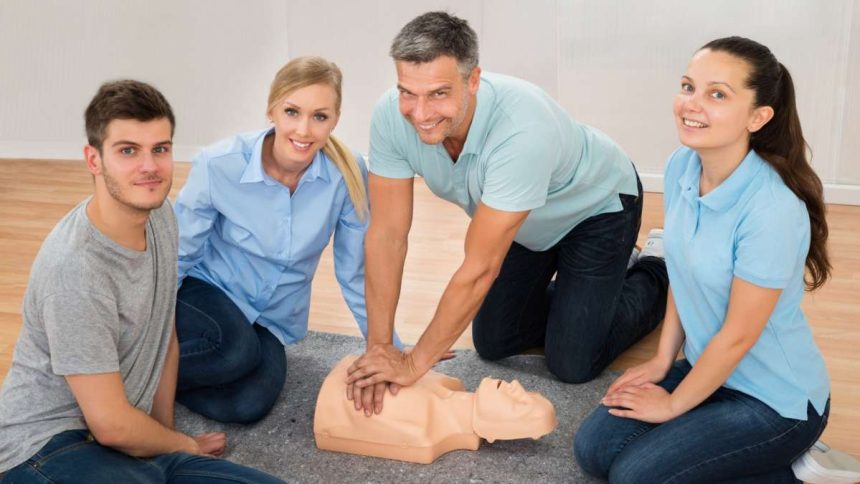In the bustling atmosphere of gyms, where fitness enthusiasts push their limits and strive for personal bests, one often overlooked aspect of safety is emergency preparedness.
Among the various precautions a gym can take, CPR (Cardiopulmonary Resuscitation) training stands out as a crucial, life-saving skill that should be mandatory for all staff members and highly encouraged for regular gym-goers.
Imagine this scenario: A fitness enthusiast is midway through an intense cardio session when they suddenly collapse, clutching their chest. The room fills with panic as people rush to their aid, but the critical question arises—does anyone know CPR? In such moments, every second counts. Having someone on hand who can administer CPR can mean the difference between life and death.
CPR training is not just about pressing on someone’s chest. It encompasses a set of skills designed to keep blood and oxygen flowing through the body when the heart stops beating. This immediate response can maintain vital organ function until professional medical help arrives.
With heart disease being one of the leading causes of death worldwide, the likelihood of encountering such an emergency in a gym is significant. Thus, the importance of CPR training cannot be overstated.
Many gyms already have basic first aid kits and automated external defibrillators (AEDs) on hand. However, without proper training, these tools can be as useful as a book in a language you don’t understand.
CPR training empowers individuals with the knowledge and confidence to use these life-saving devices correctly. It ensures that when an emergency strikes, there is no hesitation, just swift, effective action.
Gym owners and managers should prioritize CPR training. Offering regular training sessions as part of staff onboarding and continuing education is a good start. Many platforms offer CPR certification online.
Imagine a gym where every personal trainer, receptionist, and member knows how to perform CPR. Such a community not only promotes physical fitness but also ensures a safe environment where everyone looks out for each other.
Furthermore, gyms can organize CPR awareness days, inviting local healthcare professionals to demonstrate CPR techniques and discuss the importance of emergency preparedness. These events can be interactive and engaging, with hands-on practice sessions that demystify the process and boost confidence. Additionally, integrating CPR drills into regular gym operations can ensure that staff and members are always prepared to act swiftly in an emergency.
The benefits of widespread CPR training extend beyond the gym. Individuals who learn CPR take this vital skill with them wherever they go, home, work, or public spaces.
By fostering a culture of preparedness in gyms, we contribute to a broader societal readiness for emergencies, ultimately saving more lives.
In conclusion, emergency preparedness in gyms is not just about having the right equipment but ensuring everyone knows how to use it. CPR training is a fundamental aspect of this preparedness.
It transforms ordinary gym-goers into potential lifesavers, creating a safer environment for all. As the fitness industry continues to grow, let us not forget that true strength lies in muscles and the knowledge and readiness to help others in their most critical moments.
So, let’s make CPR training a staple in every gym and build a community where safety and fitness are a priority.
Lynn Martelli is an editor at Readability. She received her MFA in Creative Writing from Antioch University and has worked as an editor for over 10 years. Lynn has edited a wide variety of books, including fiction, non-fiction, memoirs, and more. In her free time, Lynn enjoys reading, writing, and spending time with her family and friends.















